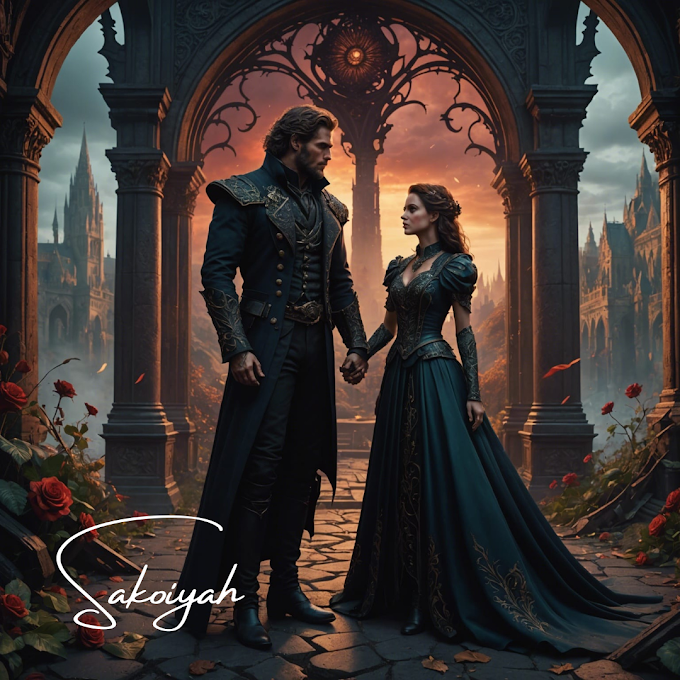Camp
NaNoWriMo is an exciting time for writers to embark on a creative journey and
challenge themselves to write a novel in just one month. A story binder is one
essential tool that can help you stay organized and focused during this writing
adventure. Whether physical or digital, a story binder is a repository where
you can gather and arrange all the elements of your story, ensuring a smooth
writing process. For NaNoWriMo this year, I plan to create 3 Story binders, one
for each of the stories I am working on. In this blog post, we'll discuss the
importance of a story binder for Camp NaNoWriMo and guide you on how to set
realistic expectations for its use.
1. Defining Your Purpose
Before
diving into creating your story binder, defining its purpose and what you hope
to achieve with it is crucial. I am building my binders to create a repository
for my stories' contents. I want to refer to a central location without digging
and straining to call events and facts about my world.
Recommended
Read | What
is a Story Binder?
Understanding your purpose will help you tailor your story binder to your needs and prevent it from becoming overwhelming or underutilized.
Questions for Defining Your Purpose
01. Do
you want a central place to organize your ideas, characters, and plot outlines?
02. Are
you looking for a visual representation of your story's world or setting?
03.
Do you need a reference for research materials or inspirational images?
2. Choosing the Right Format
The
format of your story binder will largely depend on your personal preference and
writing style. I plan to lean heavily into a physical binder for my binder;
however, I plan to store some information digitally. It would be easier to
carry around the binder and make notes as I go; when I have the time, I can sit
at my computer or desktop and transfer any needed information.
Story Binder Formats
Physical
Binder| A traditional three-ring binder with dividers and clear plastic
pockets can be a tangible and visually appealing choice.
Digital
Binder | If you prefer a clutter-free workspace or need portability, using
a digital tool like Evernote, OneNote, or Scrivener can be ideal.
Hybrid
Approach | Combine the best of both worlds using a physical binder for
visual elements and a digital tool for organizing documents and notes.
Select
a format that aligns with your workflow and enables you to access your story
materials easily.
3. Essential Sections and Components
I
follow Brittany Wang's free printable Series Binder Template for my sections. I
placed this template at the start of my binder to help me stay organized. I
plan on creating one of my own; until then, I am incredibly grateful for this resource
from Author Brittany Wang.
Story Binder Sections and Components
Character
Profiles | Dedicate a section to developing well-rounded characters,
including their backgrounds, motivations, and relationships.
Plot
Outlines | Organize your story's structure with plot outlines, scene
summaries, or storyboards to maintain a coherent narrative.
Worldbuilding
| Create a section to explore your story's setting, including maps,
descriptions, and any relevant research or worldbuilding notes.
Research
Materials | If your story requires research, compile reference materials,
articles, or website links for quick access.
Inspiration
and Visuals | Include a section for images, quotes, or any other source of
inspiration that resonates with your story.
By
incorporating these essential components, you'll have a comprehensive story
binder that will help keep you focused and organized throughout Camp NaNoWriMo.
4. Setting Realistic Expectations
While
a story binder can be an asset during Camp NaNoWriMo, setting realistic
expectations is essential to avoid overwhelming yourself.
Tips for Setting Realistic Expectations for Your Story Binder
Start
Simple | Begin with the essential sections and components mentioned
earlier. You can always add more as you progress in your writing.
Adapt
as Needed | Don't hesitate to modify or remove certain sections that aren't
serving your writing process. Your story binder should evolve with your needs.
Be
Flexible | Allow room for spontaneity and creative exploration during your
writing journey. Refrain from being constrained by your story binder; use it as
a supportive tool rather than a strict framework.
Conclusion
A
well-organized story binder can be a writer's best friend during Camp
NaNoWriMo, providing structure, inspiration, and easy access to essential story
elements. By defining your purpose, choosing a suitable format, incorporating
essential components, and setting realistic expectations, you'll be
well-prepared to make the most of your story binder and enhance your writing
experience. So, gather your materials, set up your binder, and prepare for a
fantastic Camp NaNoWriMo adventure!




.png)

.png)




0 Comments